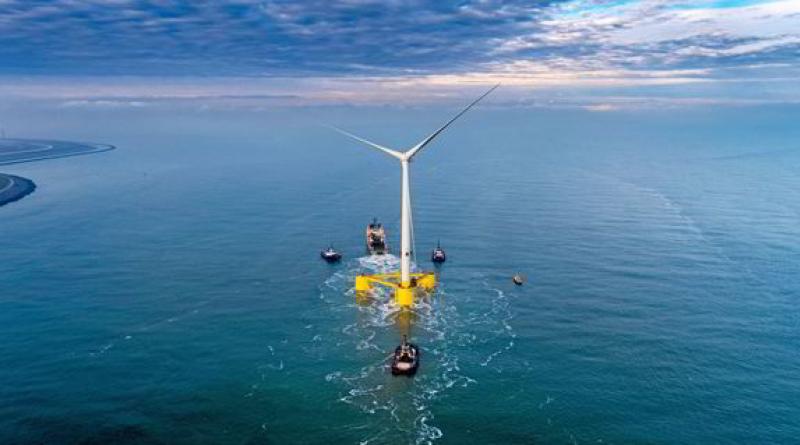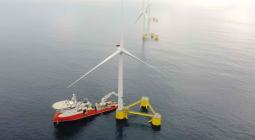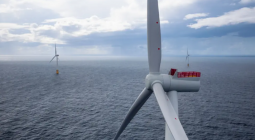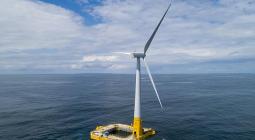Heading out to the deeps: seven reasons to believe floating wind is finally set to soar

From a single turbine off Norway in 2008, the sector is now on the cusp of international industrialisation – and if not quite an annus mirabilis, the last year has demonstrated why the technology is ready to matriculate to the global energy mainstream
Whether as a green-power replacement for brown coal-fired electricity production in Australia, a clean-energy dream-weaver in California, or a decarboniser of offshore oil & gas operations in the European northern seas, floating wind is emerging as the engine of the energy transition that can do it all. In 2022, Recharge witnessed the technology – which has seen industrial comparisons to Tesla, Ikea and even Ford Model-Ts – gearing up to take on these myriad roles, and more...
1. Australian coal
The long-trumpeted promise that floating wind could provide an alternative baseload power source to feed industrial and coastal urban centres around the world has been given fresh impetus with the rise of pioneering projects off Australia. After years of stasis under Scott Morrison's climate denialist Liberal Party government, in August the new Labor administration in Canberra led Anthony Albanese announced it was turbo-charging offshore wind power with the designation of six zones for development, potentially including deepwater acreage off New South Wales where floating is in line to replace retiring coal power.
2. North Sea oil & gas
The at-one-time controversial idea that floating wind might be used to help decarbonise offshore oil & gas production is not new – in fact it was the ambition behind the maiden deepwater test unit built, the Hywind Demo installed off Norway in 2008. But the vision reached industrial-scale reality in 2022 with switch-on of Hywind Tampen, an 88MW array wired into the giant Snorre-Gullfaks field off Norway, and has cleared the way for a first gigascale project, Trollvind, off the Scandinavian country, and a similar one in the Gulf of Suez. Back in the North Sea, there is also a landmark pilot project underway, as well as a lead-off auction off Scotland, known as INTOG, which should together speed the concept forward.
3. California
No news this year was arguably bigger among the floating wind fraternity than the US’ first-ever deepwater auction, off California, in December. Bidding surged to reach over $750m for five leases across almost 375,000 acres of the Pacific Ocean where at least 4.6GW – and potentially double that figure – are now in the frame to be developed, enough to power 1.5 million American homes. Though the challenges presented by the prospect of building gigascale projects in water depths of over 1,000-metres off a stretch of coastline that has no supply chain to speak of are formidable, the prize for the state, which has fast-approaching net-zero targets, and for the country, working flat-out to reach the Biden administration’s “national goal” of powering up 30GW of offshore wind plant by the end of the decade and well over 100GW by 2040 – and has even launched a 15GW ‘Floating Wind Shot’ to commercialise the technology – is plain.
3. Hydrogen
Hydrogen’s promise as the ‘Swiss Army knife’ of the global energy transition glitters in a special way for floating wind, which faces particular economic challenges on far-offshore sites where the cost of transporting power production long distances back to land with giant trunklines is generally a deal-breaker. But if these arrays – capturing the strongest and steadiest of seawinds on the planet – could be used to run banks of electrolysers to generate H2, the disadvantage would disappear, and the e-fuel could be shipped to port terminals on a global fleet of green tankers or used to run deep-sea blue aquaculture complexes.
This would also change the name of the game for nations around the world with offshore wind resources but not the in-country market for electricity produced, opening up a network of international trade routes, as the International Renewable Energy Agency has highlighted. Still early days, but the combination has attracted the interest a number of leading of major developers, with a variety of projects of different scale under way, not least a trio totalling 2.8GW of generation that emerged recently as winners from the clearing process of Scotland’s giant ScotWind seabed leasing round.
5. ScotWind
Scotland’s flagship ScotWind offshore wind leasing round, unveiled in January of 2022, was hailed by the international renewables industry as a watershed for the energy transition in the country, as well as for the UK and beyond – and a breakout moment for floating technology, which saw big players make commitments to advance massive, market-accelerating projects, which – if all built – would make 16GW of the 25GW awarded. Promise is not power production, of course, and Scotland, despite having a world-leading industrial track record of building offshore energy infrastructure over the course of its 60-year history in North Sea oil & gas, will have to (re)develop a new supply chain along its rugged coastlines in order to build the tens of gigawatts in the pipeline – potentially unlocking some £25bn in investment for the country.
Scotwind through the year was the gift that kept on giving, with a clearing round opening up another 2.8GW of arrays, off the Shetlands, and the so-called INTOG auction, which will focus on floating wind powered-oil production decarbonisation projects, being ushered forward under its aegis.
6. Technology triumphs
‘Technology saves’ runs the old industrial maxim. Truer for no sector more than floating wind. With only 120MW of moored arrays now in operation around the world, getting the first gigawatts up and running – en route to the over 260GW forecast to be spinning by mid-century – necessarily hinges on proving not only the viability of the individual floating concepts but also industrialising the sector to drive down the levellised cost of energy and so making it truly bankable at scale. The first-wave designs already in the water – notably the Equinor Hywind spar, Principle Power WindFloat semisubmersible, and BW Ideol ‘damping pool’ barge – look set to dominate many developer's orderbooks in the coming decade, but in their wake are over 100 other concepts that will be jockeying to become ‘off the shelf’ solutions for the energy industry.
This year saw inspiring progress for several new-look models – including Stiesdal Offshore’s TetraSpar, X1Wind’s PivotBuoy, Saitec’s Sath and Wison’s w-semi, all of which saw prototype versions brave the waves for the first time – as well as strategic strides forward on tantalisingly revolutionary designs from outfits such as World Wind Wind, T-Omega, SeaTwirl and Eolink that set offshore engineers’ hearts racing.
7. China
China leapt into lead in the global offshore wind race in 2022, accounting for 75% of installations as total operational sea-based plant closed in on 55GW and overtaking the UK as the world’s largest bottom-fixed play. Less widely reported was the completion of seatrials of a 5.5MW floating unit at Yangxi West Shapa phase 3, a 400MW project being built around monopile-based machines off Guangdong province in the south-east. It may only one turbine –a typhoon-proof MingYang machine atop an advanced semisubmersible platform from Wison – but it was moored in only 30 metres of water. This fact is key given floating wind is generally thought-of as a technology for depths of 50 metres and greater, and so opens the door to moored units being anchored in a much larger number of development sites around the world.
The project is also a bellwether for China’s ambition to step up its floating wind power fleet almost one-hundred-fold in the next five years, with almost 500MW of moored plant forecast to come into operation off the country by 2026. After that, it’s all to play for off the southeast Asian superpower: the current pipeline of demonstrators points toward China quickly leapfrogging forward from its current place as the fifth-biggest market globally for floating wind capacity behind the UK, South Korea, Spain, and Italy.





